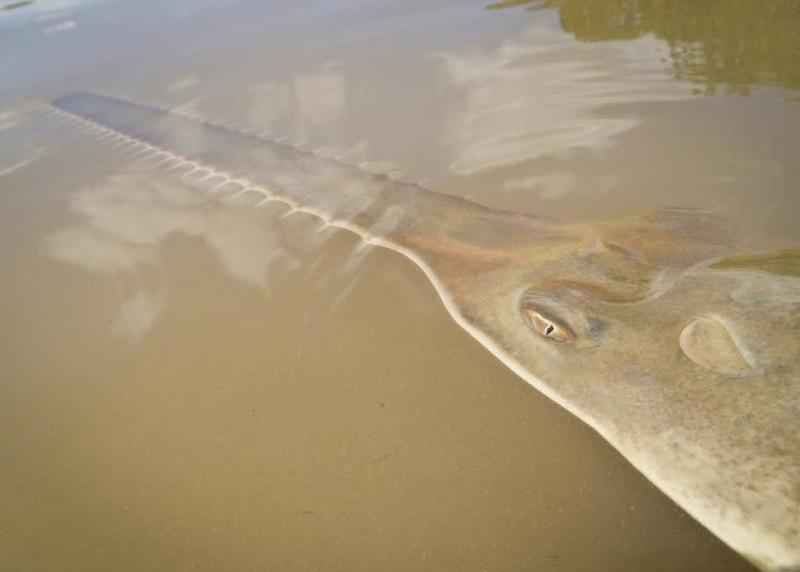
Emergency response effort for endangered Sawfish
by NOAA Fisheries 2 Apr 18:24 UTC

Sawfish © Dana Bethea/NOAA Fisheries
NOAA Fisheries and partners are initiating a project to rescue and rehabilitate smalltooth sawfish affected by an ongoing mortality event in South Florida.
The Florida Fish and Wildlife Conservation Commission is documenting reports of abnormal fish behavior, including spinning and whirling, in the Lower Florida Keys. Along with this abnormal behavior, there have also been reports of fish deaths in these areas, including more than 28 smalltooth sawfish as of March 24. The Commission is leading an effort to investigate the abnormal behavior and cause of death. Efforts to collect and analyze samples are under way.
An Attempt to Rescue Sick Sawfish
Next week, NOAA Fisheries will initiate an emergency response effort with partners to attempt to rescue and rehabilitate smalltooth sawfish affected by this mortality event. We hope to prevent additional losses of this endangered species.
An effort of this kind has never been done before in the United States. The logistics are complex.
"If the opportunity presents itself, this would be the first attempt ever to rescue and rehabilitate smalltooth sawfish from the wild," said Adam Brame, NOAA Fisheries' sawfish recovery coordinator. "We're hopeful for positive outcomes from these rescue attempts, and grateful to our partners for their support as we work to protect this endangered species."
"It's important to note that active rescue and rehabilitation are not always effective in saving stranded animals. However, it can still give us critical information to learn about the nature of the distress," he added.
Understanding the Response Effort
Why is rescue and rehabilitation necessary?
The smalltooth sawfish was the first marine fish to receive federal protection as an endangered species under the Endangered Species Act in 2003. They were historically found in coastal waters from Texas to North Carolina, but now generally only found in Florida.
As of March 24, 109 sawfish had been affected by this event, with 28 documented deaths. Affected sawfish have been large juveniles and adults (7-14 feet in length).
"We suspect that total mortalities are greater, since sawfish are negatively buoyant and thus unlikely to float after death," said Brame. "Given the limited population size of smalltooth sawfish, the mortality of at least two dozen sawfish could have an impact on the recovery of this species."
Who is participating?
- NOAA Fisheries
- Florida Fish and Wildlife Conservation Commission
- Havenworth Coastal Conservation
- Ripley's Aquariums
- Mote Marine Laboratory
- Dynasty Marine Associates, Inc.
Where will rescued sawfish be taken?
Several partner agencies have offered to house and rehabilitate the sawfish, including:
- Ripley's Aquariums
- Mote Marine Laboratory
- Dynasty Marine Associates, Inc.
What is the care plan for rehabilitation?
Veterinarians and scientists are working to better understand the cause of these issues and will develop specific care guidelines as we learn more. We will work directly with the animal care teams. The rescued sawfish will be under constant observation at quarantine facilities. With the aid of the Smalltooth Sawfish Recovery Implementation Team and partners, we will make the final decision about an animal's rehabilitation status. "Our goal is to release all rescued sawfish back to the wild once rehabilitated," said Brame.